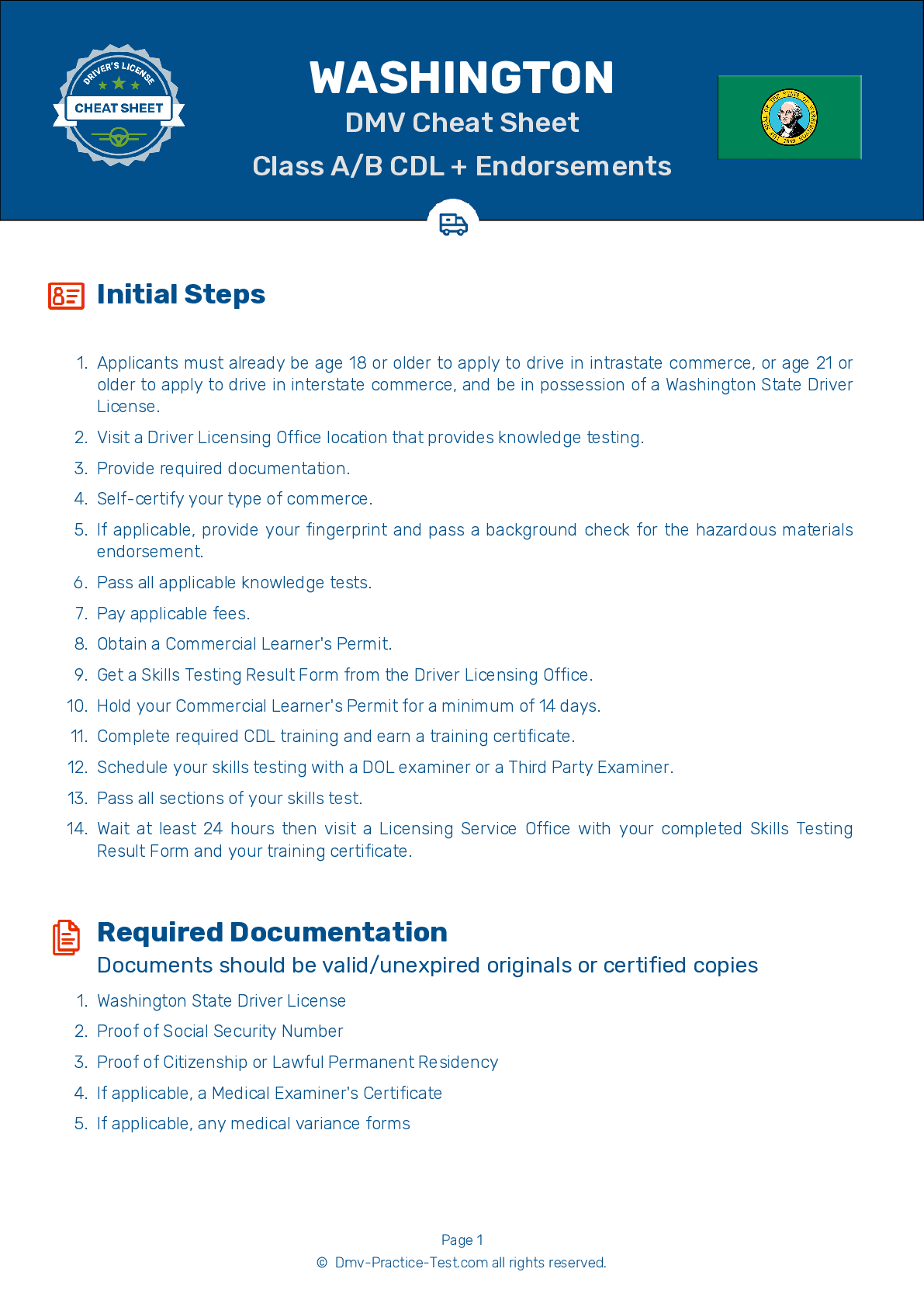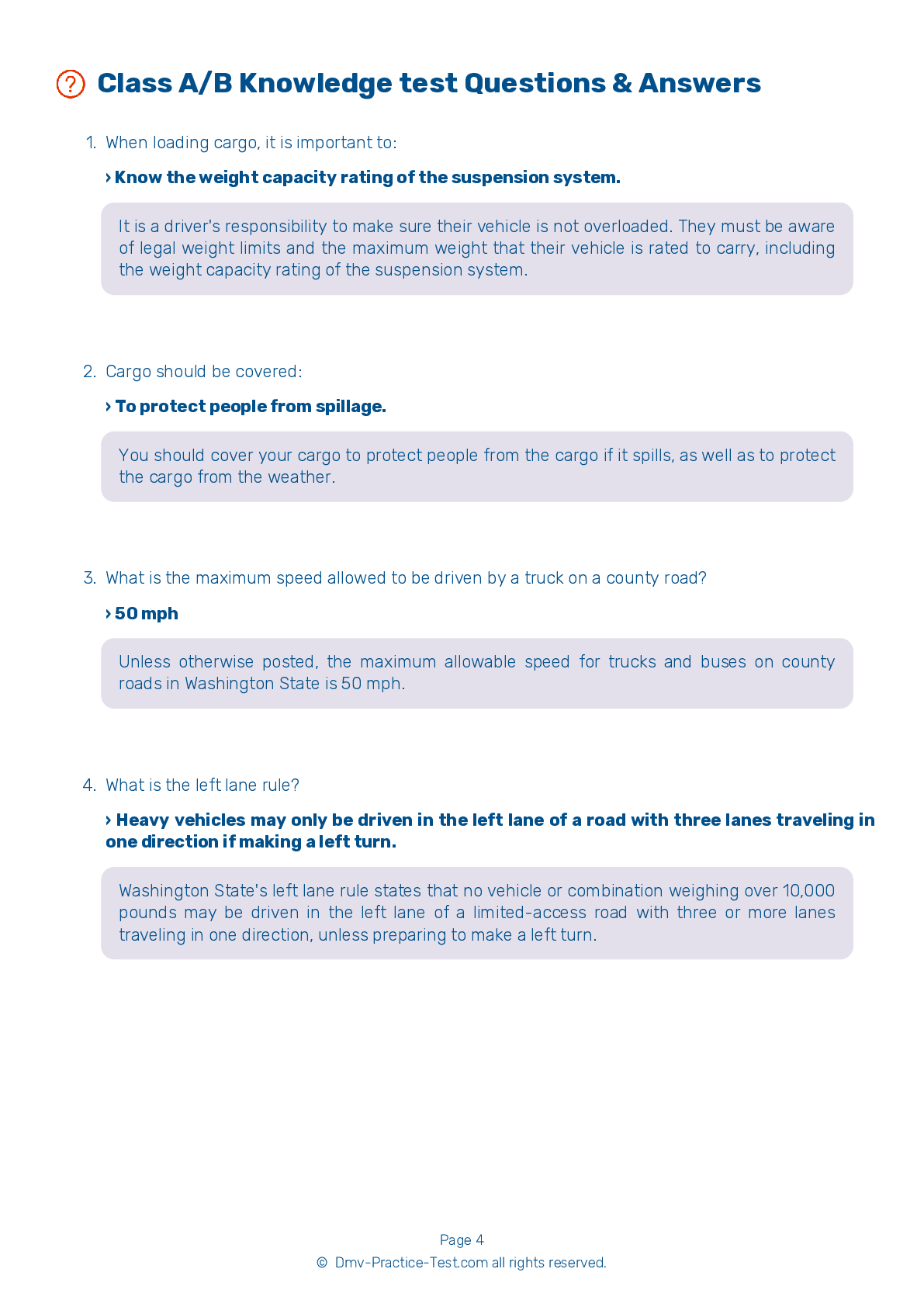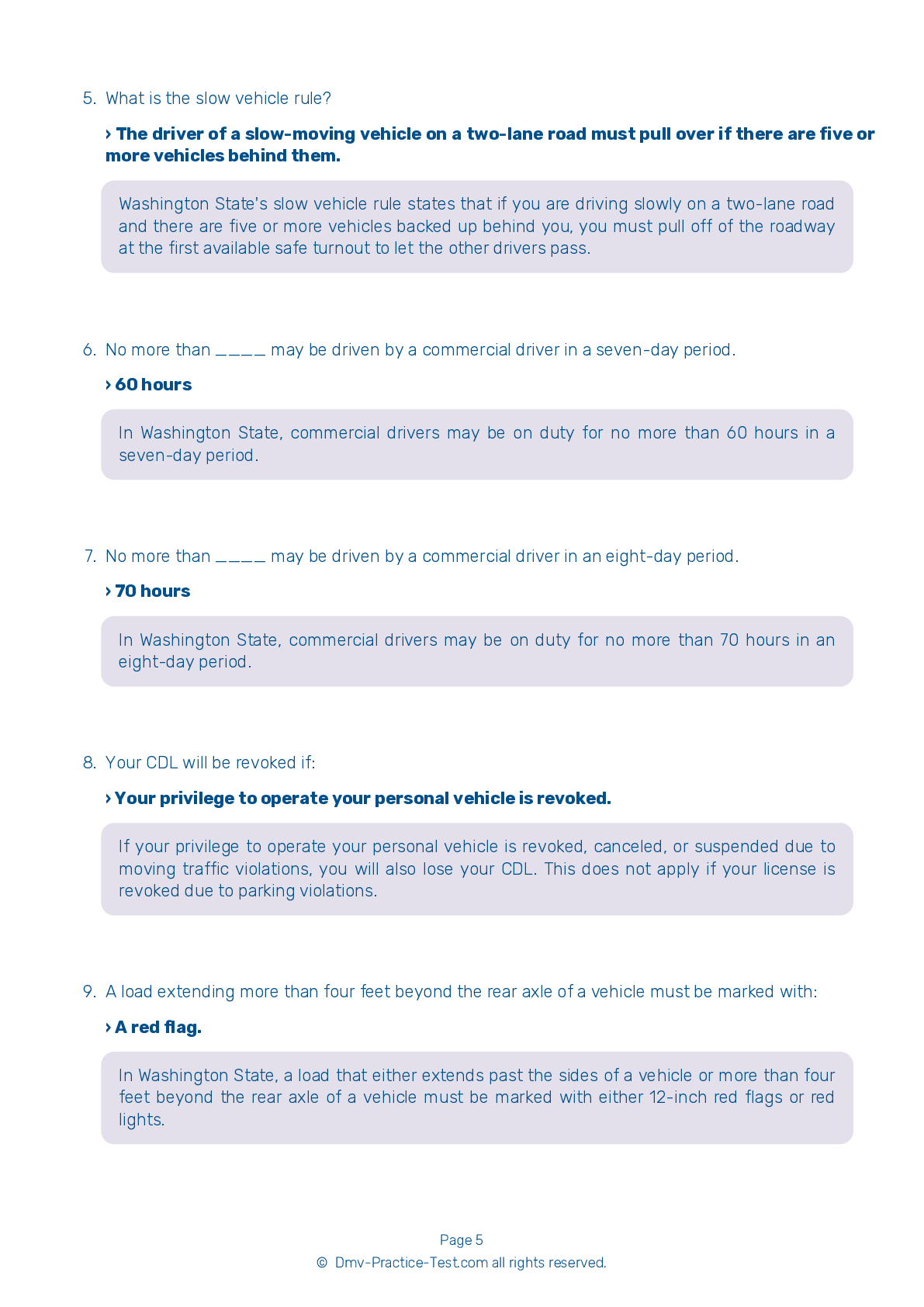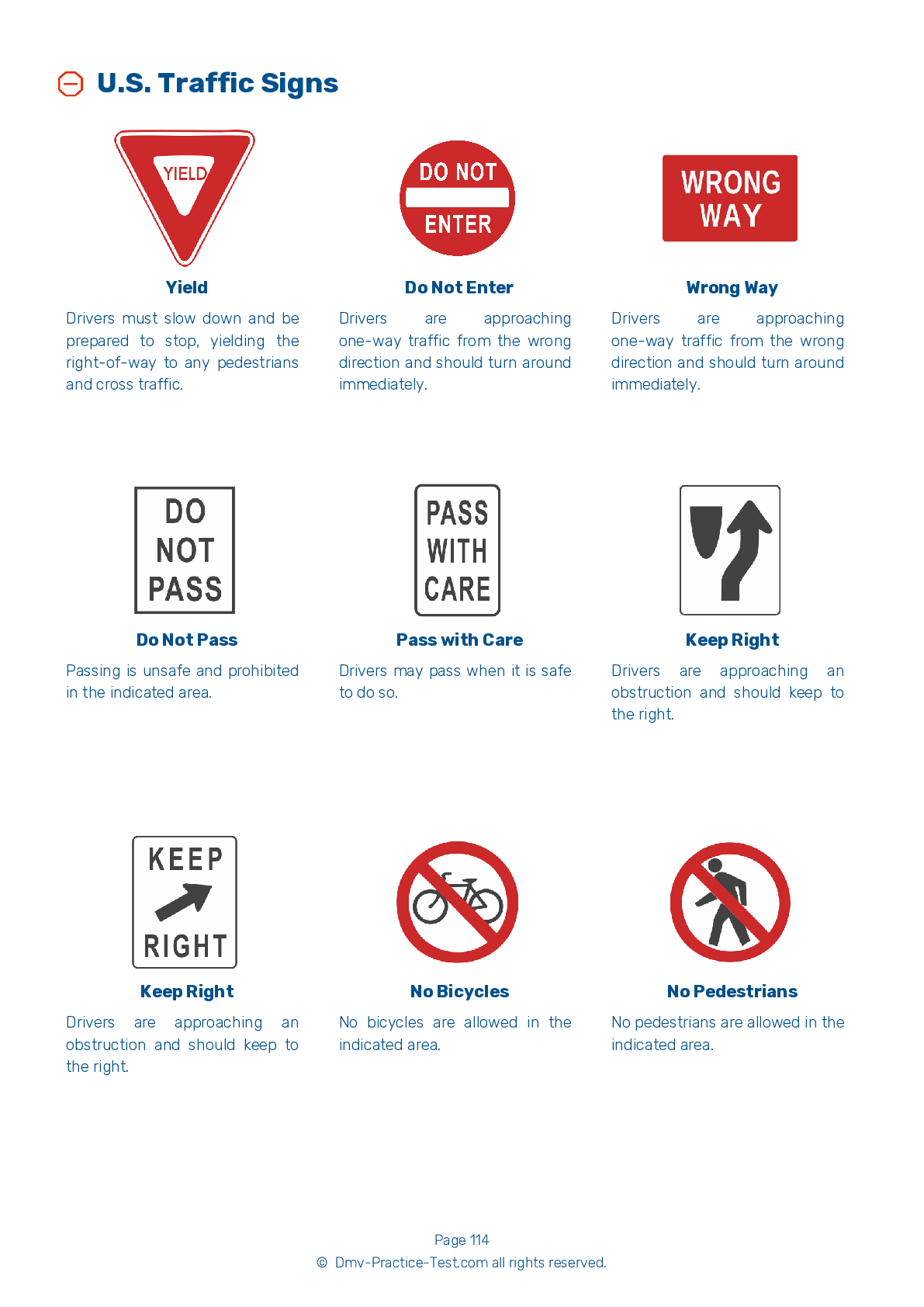Class B Driving Test | Washington 2025 #1
Train for FREE online with our Washington class B license test. The official exam test consists of several obligatory parts, with all of them checking your knowledge of different blocks of road rules. If you need to obtain a WA CDL class B permit in 2025, practice as much as possible. Free sample tests published on our website will help you check and improve your knowledge and boost your grades. Please bear in mind that CDL class B requirements may vary from state to state.
1 . When driving at night, you should do all of the following, except:
To ensure that you can see as well as possible, don't wear sunglasses when driving at night. If you wear eyeglasses, make sure they are clean and unscratched. Make sure you are rested and alert before driving at night.
2 . Which of the following is not a sign of tire failure?
If you experience tire failure, you may hear the loud "bang" sound of a blowout or feel a heavy thumping or vibration in your vehicle. If steering begins to feel heavy, or if the rear of your vehicle begins to fishtail, you should stop to check your tires.
3 . When driving, it is important that you:
When driving, you should continually scan the road for possible hazards. Form plans about what you will do if the hazards develop into emergencies.
4 . A person driving with an open window in cold weather may be:
It is important to observe other drivers' actions and identify clues that a person could be driving impaired. Drivers who have had too much to drink, are sleepy, are on drugs, or are ill can present hazards to other drivers. One sign that a driver may be impaired is that they have their windows rolled down in cold weather.
5 . Containerized loads are used:
Containerized loads are generally used when freight is carried partway by rail or ship. Sealed materials cannot be inspected, but a driver should ensure that the containers do not exceed safe and legal weight limits.
6 . When passing a row of parked vehicles, a driver should:
You should be cautious when passing parked vehicles. A person may step out of a parked vehicle or out from between parked vehicles without looking for oncoming traffic. A driver may begin moving their vehicle before realizing you are there.
7 . How long must an applicant hold a CLP before they may take the required skills tests?
You must hold a Commercial Learner Permit (CLP) for a minimum of 14 days before you are permitted to take the required skills tests.
See the exact questions that will be on the 2025 Washington DMV exam.
99.2% of people who use the cheat sheet pass the FIRST TIME
Lillian MCcranie explains how our CDL study guide was helpful in passing the exam and recommends it to everyone.
Cameron tells us how he purchased the CDL exam, and found it to be a useful tool which helped him pass the exam and find a job.



